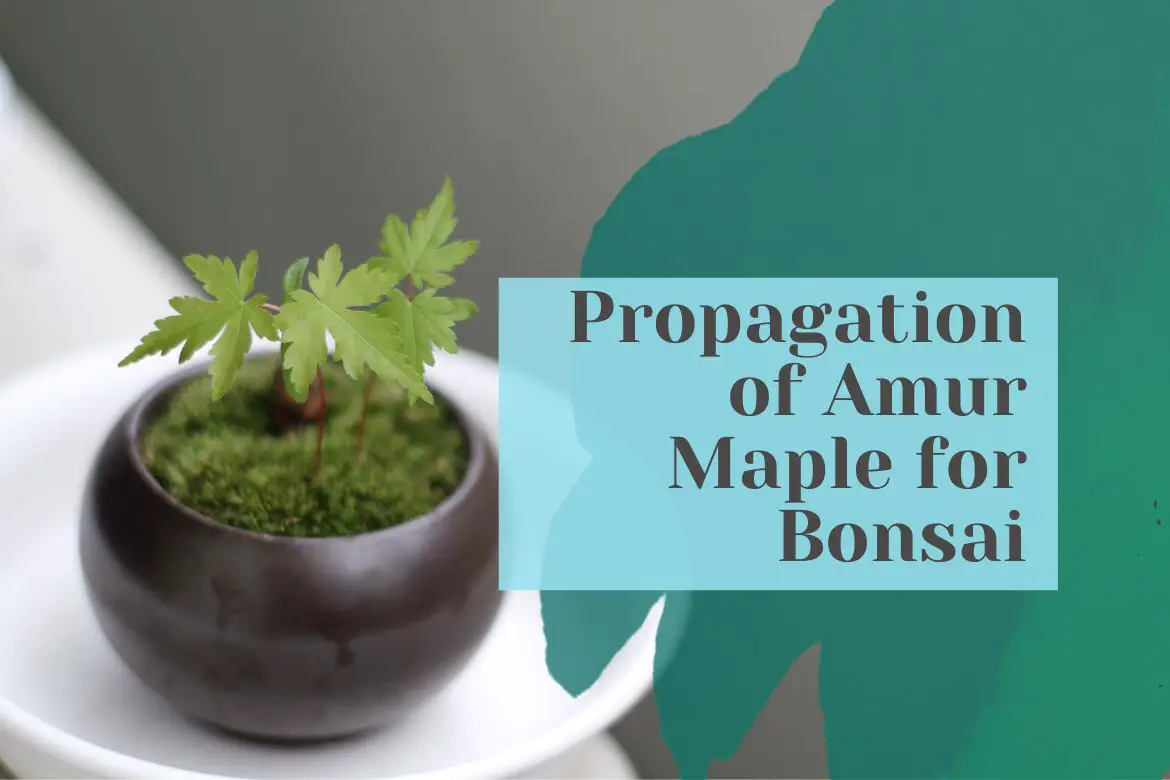Amur Maple (Acer ginnala) is a popular species for bonsai due to its small size, deciduous leaves, and vibrant autumn coloration. Continue reading How to take care of Amur maple bonsai.
There are several methods for propagating Amur Maple for bonsai, each with its own pros and cons.
In this comprehensive guide, we will explore the various propagation techniques, discuss their pros and cons, and provide recommendations for successfully propagating Amur Maple for bonsai cultivation.
Propagating Amur Maple bonsai from seeds
While less common for bonsai, Amur Maple can also be propagated from seeds. You can sow the seeds in late fall. Here are the pros and cons of seed propagation:
Pros
- Allows for the exploration of genetic variation and the creation of unique bonsai specimens.
- Can be an interesting and rewarding process for bonsai enthusiasts.
- Provides the opportunity to grow Amur Maple from scratch, observing its development from seedling to mature tree.
Cons
- Seed propagation can be slower compared to other methods.
- Variation in seedling traits can be unpredictable.
- Requires more time and care for seed germination and early seedling growth.
Propagating Amur Maple bonsai from Stem Cuttings
Stem cuttings are commonly used for asexual propagation of Amur Maple. Softwood cuttings are the easiest to root.
Softwood cuttings should be taken during the spring or early summer when the new growth is still flexible and not fully matured. These cuttings should be about 6 inches long and have 2-3 sets of leaves.
Remove the lower leaves and dip the cut end in rooting hormone before planting in a well-draining rooting medium. Keep the cuttings consistently moist and provide them with indirect light until they root.
If you don’t have the option of taking softwood cutting, you can even use hardwood cutting. However, remember that these cuttings are challenging to root compared to softwood cuttings.
Hardwood cuttings are taken during the dormant season (late fall to winter) when the tree is not actively growing. Take 8-10 inch long cuttings from mature branches, dip them in rooting hormone, and plant them in a rooting medium. Place the cuttings in a cool location with indirect light and maintain consistent moisture.
Here are the pros and cons of stem cuttings:
Pros
- Relatively easy and straightforward method.
- Can produce new plants with traits similar to the parent plant.
- Allows for a large number of cuttings to be taken from a single parent plant.
- Suitable for creating multiple bonsai specimens.
Cons
- Success rate can vary depending on the cultivar and environmental conditions.
- Requires careful monitoring of moisture levels and environmental factors.
- Some selections may require optimization of propagation methods due to mutagenesis.
Propagating Amur Maple bonsai from Air Layering
Air layering is another propagation method that can be used for Amur Maple bonsai. It involves creating a rootable layer on a stem while it is still attached to the parent plant.
Select a healthy, medium-sized branch, make a ring-shaped cut around the branch’s circumference, and remove the bark.
Apply rooting hormone to the exposed area and pack it with moist sphagnum moss. Wrap the moss with plastic wrap to retain moisture and promote root formation.
Once roots have developed, cut the branch below the new root system and plant it as a new bonsai.
Here are the pros and cons of air layering:
Pros
- Allows for the production of a rooted plant while still attached to the parent plant.
- Can produce new plants with traits similar to the parent plant.
- Suitable for creating bonsai with desirable root flare and nebari (surface roots).
Cons
- Requires more time and patience compared to stem cuttings.
- Requires more skill and technique to perform air layering effectively.
- May not be suitable for producing a large number of new plants.
My Recommendations for propagating Amur Maple bonsai
Stem cuttings are generally the most reliable and efficient method for propagating Amur Maple for bonsai. Softwood cuttings taken during the spring or early summer have a higher success rate.
Air layering can be used for creating bonsai with desirable root flare and nebari, but it requires more skill and patience.
Seed propagation can be a fascinating option for those interested in exploring genetic variation and observing the tree’s growth from seedling to bonsai, but it requires more time and care.
Remember to provide appropriate care, including proper watering, fertilization, and sunlight, to ensure the healthy growth and development of your Amur Maple bonsai.

